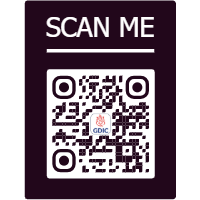
High-resolution images of the chest, including the lungs, heart, and surrounding tissues, can be produced using the diagnostic technique known as CT chest 3-D.
High-resolution images of the chest, including the lungs, heart, and surrounding tissues, can be produced using the diagnostic technique known as CT chest 3-D. As the greatest cause of death in the world, lung illness, it can be very helpful for identifying and treating it. The following are some applications of CT chest 3-D for lung disease:
Early Detection
One of the CT chest 3-D scan's most important benefits is its capacity to identify lung illness in its earliest stages. This is significant since a lot of lung conditions, such lung cancer, may not show symptoms until they are quite advanced. Early diagnosis of lung disease allows for earlier treatment, thereby improving the likelihood of a favourable outcome.
Detailed Imaging
CT chest 3-D offers incredibly detailed images of the lungs, enabling medical professionals to closely inspect them. Identifying abnormalities like nodules, masses, or lesions that could be a sign of lung cancer, tuberculosis, or other lung disorders is made easier with this level of specificity. The three-dimensional scans also give a more comprehensive view of the lungs, which makes it simpler for medical professionals to pinpoint the location and severity of any abnormalities.
CT chest 3-D imaging
CT chest 3-D imaging can be used to track the development of lung disease over time. This is crucial since some lung conditions, including pulmonary fibrosis, can take months or even years to develop. Doctors can monitor changes in the lungs and modify treatment strategies as necessary with routine CT chest 3-D imaging.
Planning therapy for lung diseases
Doctors can utilise the images, for instance, to establish the size, location, and closeness of a lung nodule to other structures like CBC blood vessels or airways. Decisions about whether surgery is required and, if so, which procedure to use can be guided by this information.
After follow-up
After receiving treatment for lung disease, patients can be monitored using a 3-D CT scan of their chest. This can assist medical professionals in determining whether the treatment was effective and whether further care is required. Regular CT chest 3-D scans can also aid in the early detection of lung cancer recurrence and other lung illnesses, enabling early treatment.
In summary, CT chest 3-D is a useful tool for identifying and treating lung conditions. It is a crucial tool in the fight against lung disease due to its capacity to detect lung disease early, give thorough imaging, track the evolution of the disease, plan treatments, and follow-up following treatments.
It's crucial to remember that CT chest 3-D subjects are subjected to ionising radiation, which raises the risk of cancer. The advantages of CT chest 3-D should be balanced against the hazards, as with any diagnostic examination.













